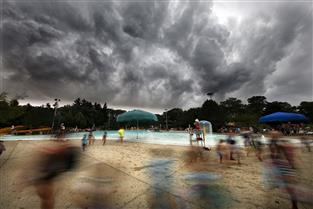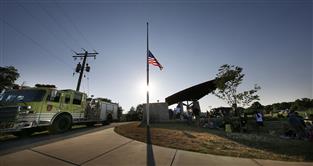Teachers seek mandatory high school gym class
Is summer program letting kids off the phy ed hook?
A proposed change to physical education requirements in the Wauwatosa School District met with a mixed reception at the School Board meeting this week.
In a state that allows students to opt out of gym classes under certain circumstances, physical education. teachers Nancy Braidigan, Christa Botsford and Teri Kandel proposed that every student in the district be required to take at least one half-credit, in-school physical education class during high school.
Exercise sends oxygen to the brain, and "the short term-effect of exercise is that we're more alert, we're able to think more clearly, it allows us to focus better, and even gives us more energy," Kandel told the board. The energizing effects of exercise make for better classroom performance throughout the day, she said.
Under state law, a student must earn 1.5 credits - three semesters - of physical education to graduate, and those classes must be spread out over three separate years.
A 2011 law modified that requirement, allowing a student involved in school sports or another approved, organized, physical activity to substitute - one time - a 0.5-credit academic class for a 0.5 credit physical education class. The classes that qualify as substitutes are English, social studies, math, science or health education.
The in-school gym-class population is further eroded by summer-school physical activity classes, which are popular, attracting more than 300 students, said Director of Student Learning Beth Erenberger.
Between the two options, a student could fulfill his or her physical education requirement without attending a single gym class during the regular school year.
Besides the energizing effects of class-time exercise, Kandel said that while physical education classes aren't tested subjects - in the way that academic subjects are tested by, say, the ACT - they are in line with the district's wellness initiative.
Botsford said physical education classes also allow teachers to build different kinds of relationship with students than do teachers in academic classes. "It's much more of a social atmosphere," she said. Classes develop team building, problem solving, leadership skills and other attributes.
Braidigan described the broad offerings of the physical education curriculum, beginning with a "foundations" class, and continuing through classes with different emphases, such as Zumba or dance, strength and conditioning, game play, and adventure pursuits, such as rock and wall climbing, rope climbing, and other outdoor endeavors.
"Academic achievement improves when they have a physical activity during the school year," she said.
School Board President Michael Meier said he didn't see the need for the requirement of a school-semester gym class.
"There's a requirement where there is no need, a safety net where there is no hazard," he said. He found the proposal inconsistent.
Board member Phil Kroner praised the presentation, but said it was counterintuitive to, essentially, drain students from a summer program that is highly successful.
Erenberger, who spoke for the proposal, said attendance at the summer program is highest for incoming freshman, who in many cases want to free up their schedule for academic classes, and drops off rapidly in the upper grades.
She said, if taking out the requirement "was a gamble on our physical education (program), I would take that bet," but, on the other hand, requiring a semester class says "we value the program enough to make it required."
Superintendent Phil Ertl said he supported the proposal because he viewed regular exercise over a longer period, such as a semester, as more beneficial than the compacted schedule of a summer program.
The proposal was a first hearing and the board took no action.
More from News and Features
- Anodyne Coffee plans to open location in Wauwatosa Village
- Wauwatosa Meetings: Aug. 4
- Video: Wauwatosa girl's curbside ice cream stand raises money for the hungry
- Wauwatosa News and Notes: Hands-only CPR training offered; Firefly Art Fair is Aug. 6-7
- Wauwatosa Ask Now: Why are there barriers and fencing along the North Avenue bridges over the Menomonee River?
- Mystery Photo Contest: July 28
- Wauwatosa gears up for National Night Out event, this year at the zoo
- Election 2016: Wisconsin's 4th District candidates weigh in
- Wauwatosa's Luther Manor residents share smiles through flower delivery
- Wauwatosa Police Report: July 17-23














